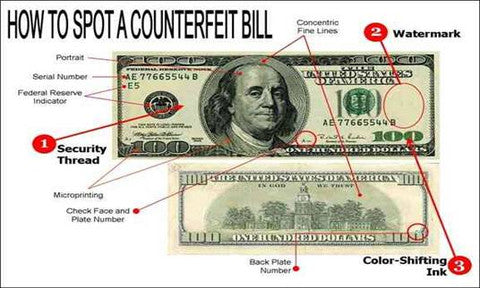Explore the Usages of Funny Money in Artistic Creations and Theatrical Performances
Phony money, often synonymous with deceptiveness and illegality, holds a peculiar appeal when it locates its way right into the world of artistic developments and staged performances. Its background is loaded with complex narratives that have actually influenced artists to include these replicas into their jobs. From the visual arts to the dramatic stage, copyright money has been used in fascinating means that test perceptions and prompt idea. As we look into the multifaceted uses funny money in these innovative domain names, we begin to uncover a globe where authenticity and replica blur, motivating us to question the actual nature of value and representation within art and performance.

Historic Importance of Funny Money in Art
The historical value of imitation cash in art is a complex and interesting topic that sheds light on the junction of imagination, subversion, and socio-political commentary. Throughout history, artists have actually used funny money as a tool for difficult social norms, questioning the value of money, and making powerful statements about riches and power.
Among one of the most notable instances of funny money in art go back to the Dada motion of the early 20th century - copyright money for sale. Musicians such as Marcel Duchamp and Hannah Höch incorporated phony money into their works to slam the capitalist system and check out the principle of worth in a quickly changing world
Additionally, throughout times of financial instability or political turmoil, copyright money has been made use of by artists as a form of demonstration or disobedience. By creating and distributing copyright, musicians have had the ability to interfere with the status quo, difficulty authority, and prompt vital discussions about the function of money in society.
Influence of copyright Money on Visual Arts
By incorporating copyright right into their jobs, musicians provoke discussions on the nature of worth, credibility, and social understandings of wide range. The usage of phony money in art additionally elevates ethical factors to consider pertaining to the borders of creative expression and the ramifications of duplicating lawful tender. Generally, the effect of copyright currency on aesthetic arts is diverse, boosting crucial reflections on the intersection of cash, art, and social worths.
Meaning and Significance in Theatrical Fake Displays
Making use of theatrical copyright screens, artists use symbolic representations to share deeper definitions and stimulate thought-provoking interpretations within the world of efficiency art. Through the incorporation of imitation money in theatrical manufacturings, developers can explore motifs such as greed, power, corruption, and the illusion of riches. Using copyright on stage can serve as an allegory for social issues, economic variations, and the delicacy of economic systems.
In theatrical performances, the symbolic worth of funny money extends past its monetary worth. It can represent the misleading nature of appearances, the search of materialistic desires, and the repercussions of dishonest actions. By using copyright money as a prop, artists can test target markets to question real significance of wealth and the ethical boundaries that individuals may go across in its quest.
Moral Factors To Consider in operation Funny Money for Art

One major honest consideration is the possible legal effects of using funny money in art. Counterfeiting money is illegal in most nations and can bring about significant effects for artists that purposefully include imitation costs right into their job. copyright money for sale. This not only puts the artist at danger yet additionally raises questions regarding promoting prohibited tasks via art
Additionally, there is a moral predicament regarding the credibility of the art work itself. Using funny money blurs the line between reality and imitation, potentially tricking visitors and endangering the honesty of the imaginative item. Artists have to think about whether using funny money straightens with their values and creative intentions, evaluating the prospective impact on their reputation and reliability.
Future Trends in copyright Money Assimilation
Considering the developing landscape of creative expression, the consolidation of copyright in imaginative jobs might witness a change towards ingenious and intriguing opportunities. As musicians continue to press borders and check out new mediums, copyright money can progressively be used to challenge societal norms, examine the value of money, or make powerful statements about riches read more and consumerism.
One future pattern in funny money combination could be its usage in immersive art installments where target markets are motivated to interact with the pieces, obscuring the lines in between truth and impression. Additionally, advancements in modern technology may lead to the development of hyper-realistic copyright money that is basically indistinguishable from authentic money, opening opportunities for much more in-depth and complex art work.
In addition, partnerships in between artists and counterfeiters can lead to one-of-a-kind items that incorporate conventional imaginative methods with the workmanship of creating funny money. Nonetheless, honest considerations surrounding the validity and principles of using copyright cash in art will proceed to be a point of opinion as these future fads unravel.
Final Thought
In conclusion, usings funny money in theatrical performances and artistic developments have a long history and remain to provide motivation for musicians. From its historic importance to its influence on aesthetic arts and meaning in staged displays, copyright plays an one-of-a-kind duty in the art globe. However, moral considerations must be taken into learn the facts here now consideration when utilizing phony money for imaginative functions. The assimilation of imitation cash in art is most likely to proceed developing in the future.
On the whole, the effect of copyright currency on visual arts is diverse, promoting vital reflections on the junction of money, art, and social worths.

In final thought, the usages of imitation cash in staged efficiencies and artistic creations have a long history and continue to be a source of motivation for musicians. Moral considerations must be taken right into account when making use of copyright money for imaginative purposes. The integration of imitation money in art is likely to proceed evolving in the future.